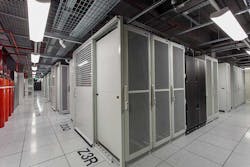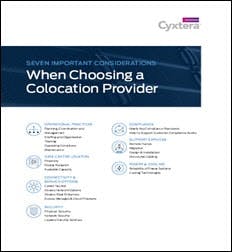This is the second post in a four-part series that explores the seven most crucial elements to consider before choosing a colocation provider. This post focuses on the importance of data center proximity, as well as how to connect your IT infrastructure to users, business partners and more.
Download the full report.
A data center that is close to your company’s offices is a common requirement for companies shopping for colocation services. However, the advantages go well beyond providing easy access for your staff. Close data center proximity to your location can help improve the performance of your IT infrastructure. If you are sending large volumes of data from your primary site to your colocation environment, distance matters. A site that is physically close reduces data replication issues. Minimizing latency delays has always been important for application performance, and keeping data center proximity close helps. As chatty applications – meaning those that wait for server acknowledgment or perform a number of small transactions — continue to become widespread, any latency issues become exacerbated and can severely impact performance. Data center proximity can help reduce the effect these latencies have on your applications.
In addition to having a center close by, the ability to tap into a network of other centers can help make your IT more resilient. Look for a provider that has a data center near you and also has multiple options to provide locations that are as far away as required from your primary site. When you can deploy colocation environments across geographies to back up data, run additional instances of applications and circumvent local weather or power disruptions, you have a solid foundation for business continuity planning. If you need to deploy colocation environments in other locations, a provider with a global footprint will more likely be present in the major markets you need to serve.
When it comes to the availability of physical space, make sure the provider has additional capacity in case you need to build out your environment. Having the option to expand your space in the future can save you significant time and costs compared with deploying with a different provider or moving to another data center. Look for providers that are well funded to invest in additional build-outs for the data center. Providers that do their builds on a modular basis keep a tighter control on costs but are ready to expand to meet client needs.
How Can I Connect my IT Infrastructure to Users, Business Partners and Cloud or Managed Service Providers?
Colocation is more than just racking and stacking your equipment in a data center and adding a network connection. Without a highly reliable and redundant network connectivity, your IT performance will suffer. A provider with a full rang of connectivity options can ensure all your locations, customers and business partners get the access to the applications and resources they need in your colocation environment.
[clickToTweet tweet=”Colocation is more than just racking and stacking your equipment in a data center and adding a network connection. #datacenters” quote=”Colocation is more than just racking and stacking your equipment in a data center and adding a network connection. #datacenters”]
It is also critical that your provider has carrier diversity at their data centers if you are running applications that have this requirement to ensure reliable and redundant network connectivity. Make sure your colocation provider can offer you advanced networking capabilities so you can meet your application performance and uptime requirements. Connectivity increasingly goes beyond networking connections to the user community and to connectivity between IT platforms, including leading cloud providers. For most companies, colocation is only one part of a bigger IT picture — you shouldn’t think of it in isolation.
Consider your selection of a colocation provider in the context of how your entire IT infrastructure impacts your business. In additional to colocation services, many companies require capabilities like managed hosting and are developing cloud solutions. A partner that can offer access to all these services, one with expertise across the entire portfolio, can help you achieve a flexible, better-performing infrastructure.
[clickToTweet tweet=”Cloud services will continue to grow as a part of the IT solution set. #datacenters” quote=”Cloud services will continue to grow as a part of the IT solution set. #datacenters”]
Cloud services will continue to grow as a part of the IT solution set, but many organizations will continue to have a need for colocation as part of their infrastructure. The future will likely see many side-by-side colocation and cloud environments. Your colocation provider should understand the capabilities of a cloud-based system and be able to help you work across multiple environments.
Over the next few weeks, this series will also cover the following topics:
- Does Your Colocation Provider Have the Methods to Ensure Maximum Uptime?
- How Does my Colocation Provider Ensure Physical and Virtual Security?
- Colocation Provider Support: How to Choose Your Partner
You can download the full report here, courtesy of Cyxtera, “Seven Important Considerations When Choosing a Colocation Provider.”






